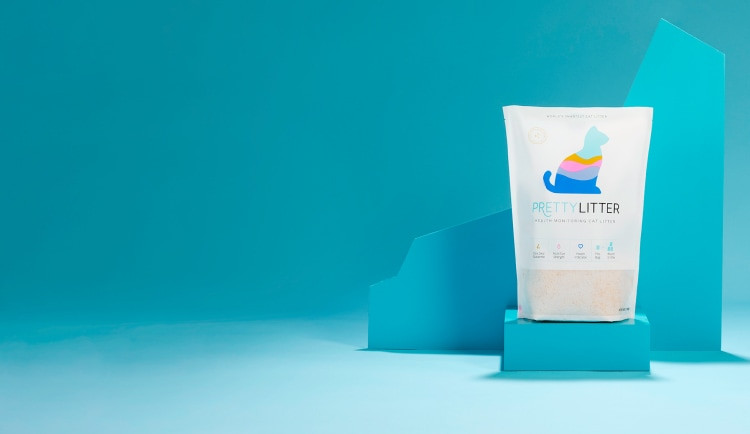Over the years, navigating the world of cat litters has been quite the journey. From clumping to non-clumping, scented to unscented, and everything in between, each type promises the best solution for our feline companions and our homes. Recently, driven by a desire to make more eco-conscious choices, I decided to try Pine Cat Litter, also known as feline pine litter or pine pellet litter. This natural cat litter option is often praised for its environmental benefits, but how does it truly stack up in everyday use?
Environmental Friendliness: The Pine Litter Promise
Pine cat litter immediately appeals to the environmentally aware pet owner. Marketed as a greener alternative, many brands utilize by-products from the wood industry. Instead of traditional clay litters, pine litter resembles small wood pellets. These pellets are typically made from dehydrated wood shavings, a waste product from lumber yards and similar wood processing facilities. The idea of repurposing waste into something useful for our pets is undeniably attractive.
However, my experience introduced a few nuances to this eco-friendly image. I found that to reach a depth acceptable to my cats, who are enthusiastic diggers, I needed to use a significant amount of pine litter. A thin layer simply didn’t suffice for their digging habits. This higher usage meant that I was going through bags of pine pellet litter more quickly than I would with clay or crystal litters. Consequently, more frequent store runs or deliveries became necessary, potentially increasing my overall carbon footprint. While the base material is sustainable, the increased consumption raised questions about whether the environmental benefits were being fully realized in my case.
Odor Control and Dust: A Breath of Fresh Air?
One undeniable advantage of natural feline pine litter is its pleasant scent and effective odor control. In its dry form, pine litter emits a subtle, sawdust-like aroma, reminiscent of a pet supply store. When it comes into contact with cat urine, it impressively neutralizes the pungent ammonia smell. However, this is replaced by another distinct odor, one that’s more akin to a barnyard or farm. It’s an undeniably organic and rather strong scent that emerges from the litter box.
For someone like me, who suffers from nasal allergies, dust is a major concern with cat litter. Clay-based litters are notorious for their dustiness, which is why I transitioned away from them. Pine kitty litter, in this aspect, is gentler on the respiratory system, producing minimal dust. While it’s a welcome relief compared to clay litter, I still find silica cat litter to be superior in both odor and dust control. The combination of effective odor management and virtually no dust makes silica litter my preferred choice for overall air quality in my home.
Home Cleanliness and Tracking: Paw Prints Around the House
Cat litter tracking is an unavoidable reality for cat owners. Litter inevitably clings to paws and gets scattered around the house to some degree. Clumping, clay-based litters tend to be the worst offenders in this regard, while crystal litters generally track less. Pine pellet litter falls somewhere in the middle of this spectrum.
When the litter box is kept clean and the pellets remain dry, tracking isn’t too significant, as the larger pine pellets don’t readily stick to cat fur. However, once the pellets absorb moisture and crumble into sawdust, they can be tracked a bit more easily. Despite this, cleanup is generally straightforward.
The biggest challenge I encountered with pine litter and home cleanliness was my cats’ enthusiastic digging. The texture of the wood pellets seemed to encourage excessive digging and kicking, resulting in pine litter being scattered around the litter box area. Perhaps this is just a quirk of my particular cats, but it’s something to consider if you have diggers.
 PrettyLitter silica gel cat litter bag showcasing its odor control benefits.
PrettyLitter silica gel cat litter bag showcasing its odor control benefits.
Pine Litter vs. Silica Gel Litter: A Head-to-Head Comparison
Pine pellet litter presents a mixed bag of benefits and drawbacks. Its primary advantages lie in its sustainability and natural pine scent. However, it also comes with downsides such as the need for more frequent replacements, potentially offsetting some of its environmental advantages, and a distinct, albeit natural, odor when wet.
Silica gel litter, such as PrettyLitter, offers an alternative that prioritizes low maintenance and effective odor control. Silica litter generally lasts longer than pine litter, and some brands, like PrettyLitter, even offer health monitoring benefits through urine color changes.
Ultimately, the best cat litter is subjective and depends on individual needs and preferences for both you and your cat. If minimizing mess, extending time between litter changes, and gaining insights into your cat’s health are top priorities, silica-based litter might be a more suitable option.
What has your experience been with pine cat litter? Did it work well for you and your feline family? What factors influenced your cat litter choices? Share your thoughts and experiences in the comments below!
